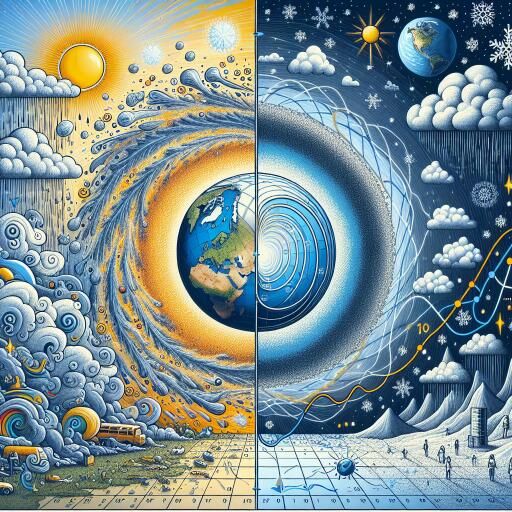
What’s the Difference Between Climate and Weather Models? It All Comes Down to Chaos
In today’s world, weather forecasts play a crucial role in daily decision-making—whether to plan a picnic, hang out the laundry, or opt for cycling to work. These forecasts are vital for alerting us to extreme weather events and ensuring the efficient operation of our power grids.
To generate these forecasts, entities like the Australian Bureau of Meteorology employ highly intricate mathematical representations of the Earth and its atmosphere. These are known as weather and climate models.
Beyond immediate forecasts, the same complex software aids scientists in projecting the Earth’s climate for the decades or even centuries to come. Such predictions are essential for preparing for, or ideally circumventing, the impacts of long-term climate change.
The intricacies of weather and climate models cannot be overstated. For instance, the Australian Community Climate and Earth System Simulator is constructed from millions of lines of computer code, testament to their complexity.
Without these models, humanity would remain in the dark for both imminent weather events and for shaping our far-reaching environmental fate. But what do these models entail, and how do they distinguish themselves from each other?
Understanding the Core Principles
Weather represents the atmospheric conditions over short periods—today’s temperature, the wind conditions, whether we experience rainfall, and if so, how much. In contrast, climate refers to long-term statistics of weather occurrences, like average summer temperatures or the frequency of thunderstorms each decade.
Despite the differing timeframes, the ability to model both weather and climate with the same tools arises because they share the same foundational physical principles.
The Role of Chaos in Modeling
The world of weather and climate modeling is deeply influenced by chaos theory, where small differences in initial conditions can lead to vastly divergent outcomes. This is illustrated by the popular metaphor of the “butterfly effect.” In this context, weather models aim for precise predictions over the short term, but the inherent chaotic nature limits foreseeable accuracy beyond a week or two.
Climate models, on the other hand, do not attempt to predict specific weather conditions on particular dates far into the future. Instead, they focus on averages and trends over extended periods. By doing so, they can provide insights into how temperatures, precipitation patterns, and sea levels might change in the long run, despite the chaotic elements at play.
How These Models Help
The integration of weather and climate models helps us navigate both daily life and broader strategic planning. For daily activities, they furnish the information needed to make informed choices about our interactions with the environment. Warnings about extreme conditions, such as cyclones or heatwaves, help communities to prepare and mitigate potential damages.
On a larger scale, climate models guide policymakers, city planners, and industries in developing strategies to tackle future challenges. They support endeavors to reduce carbon footprints, adapt infrastructure, and manage resources in a sustainable way, aiming to mitigate the adverse impacts of climate change.
Ongoing Developments
The development and refinement of these models is an ongoing endeavor. As computational power grows and our understanding of atmospheric dynamics improves, models become more accurate and their predictions more reliable. This synergy between technological advancement and scientific discovery enhances our capability to confront both immediate weather fluctuations and long-term climatic shifts effectively.
In summary, while weather and climate models serve distinct functions based on differing timescales, they both operate on the same fundamental laws of physics. Their accurate development continues to be crucial for daily life, emergency preparedness, and long-term environmental strategies as we face the realities of changing global conditions.





Leave a Reply